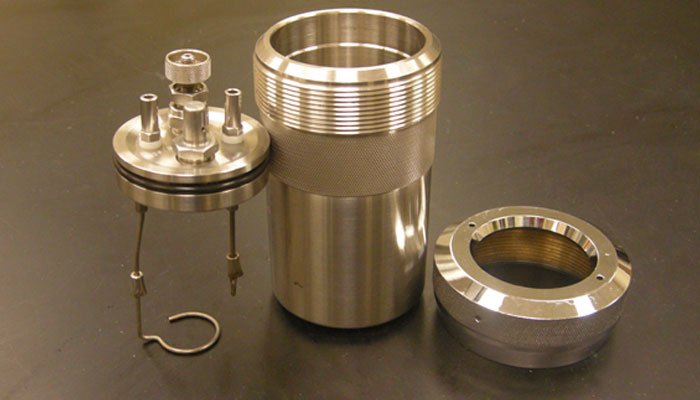Bomb Calorimetry
Heat of Combustion & Gross Calorific Value
What is Bomb Calorimetry?
Bomb calorimetry is used to determine the heat of combustion of a gas, liquid, or solid. Combustion is an exothermic reaction with oxygen. We prepare the sample in an oxygen-charged bomb and detonate it under water. The change in temperature (ΔT) of the water, combined with the mass of the sample, are used to calculate the heat of combustion in °C/g. For gases and liquids, the units can be converted to heat per volume such as BTU/scf. Different oxygen pressures can be used to simulate combustion under oxygen-poor or oxygen-rich operating conditions. FAI uses a Parr oxygen bomb chamber and adiabatic calorimeter.
For gases, a pressurized chamber of gas is used to charge the bomb to 1 atm or higher. For liquids and solids, at least 15 grams or 15 mL are required per sample. All samples are run in duplicate for consistency. If a sample does not fully combust, the remaining ash or residue can be examined by Scanning Electron Microscopy (SEM), Energy Dispersive X-Ray Spectroscopy (EDXS), or Fourier Transform Infrared Spectroscopy (FT-IR). FAI reports the masses/volumes of samples, the oxygen pressure and/or ratio, and the heat of combustion correlating to the sample type.
Related Services: Differential Scanning Calorimetry and Thermogravimetric Analysis
For more information contact us.

